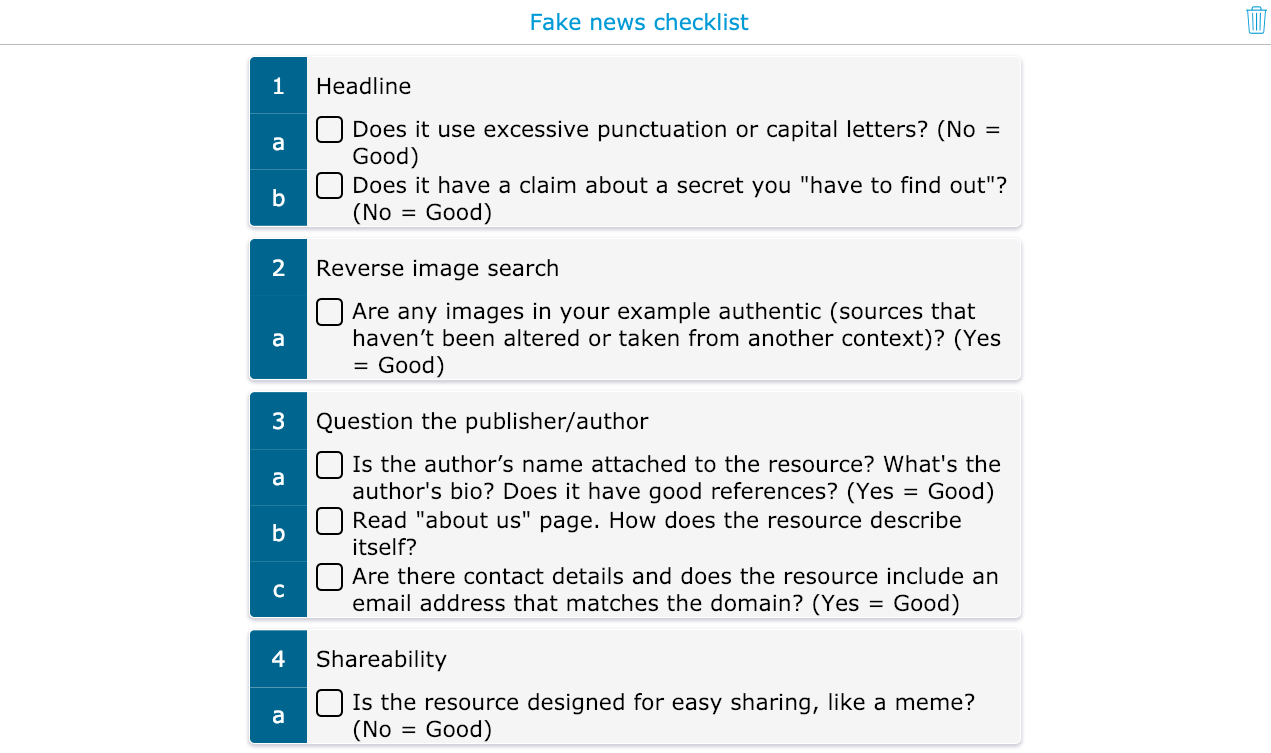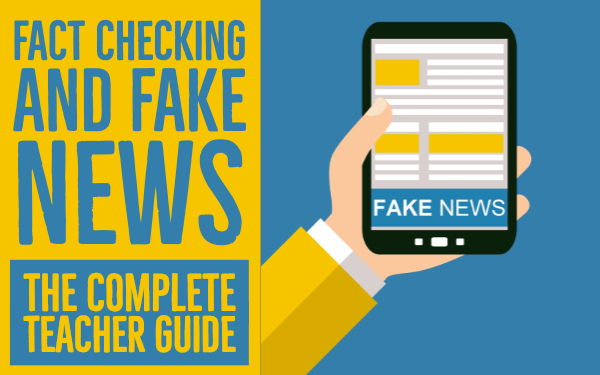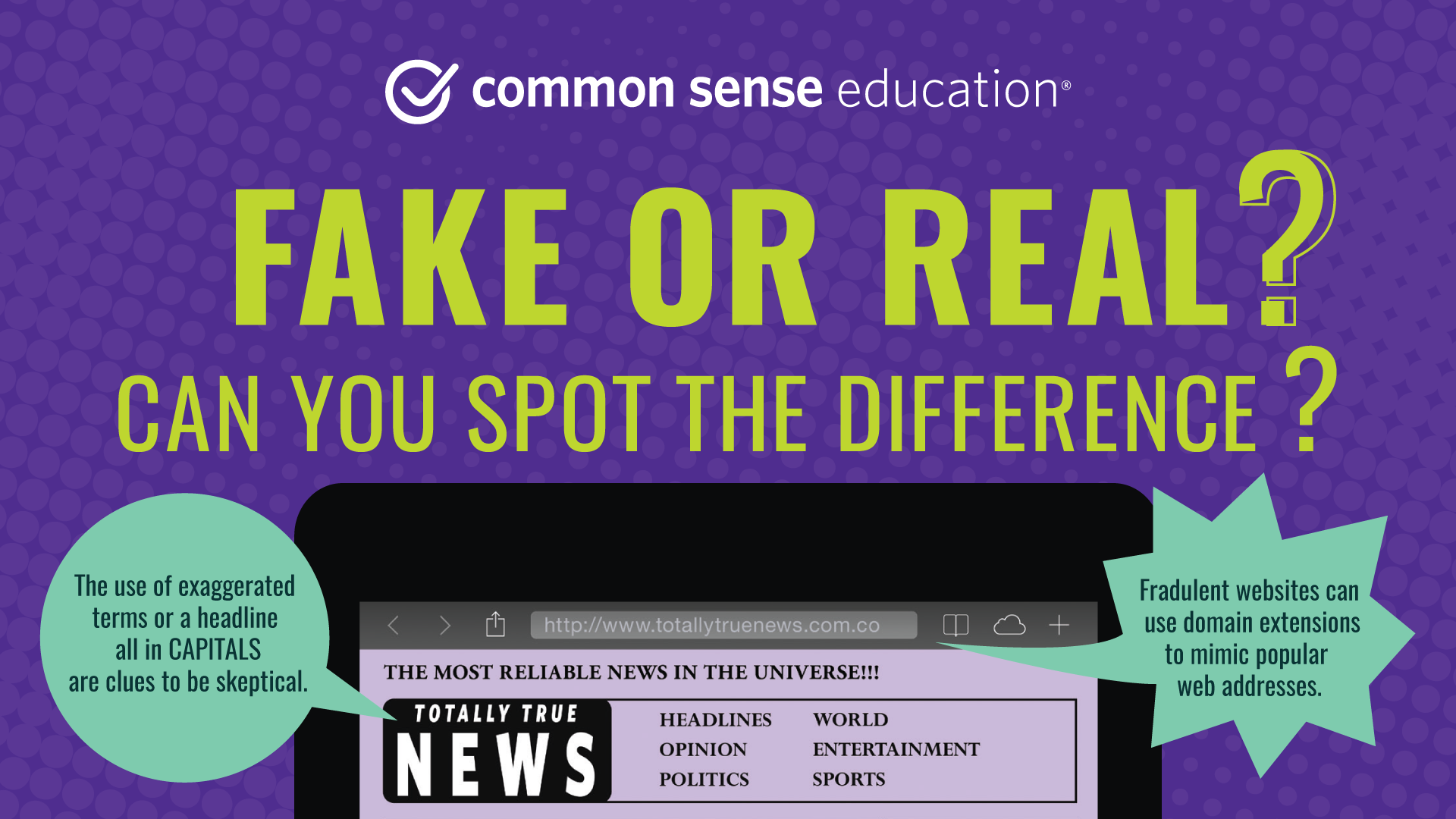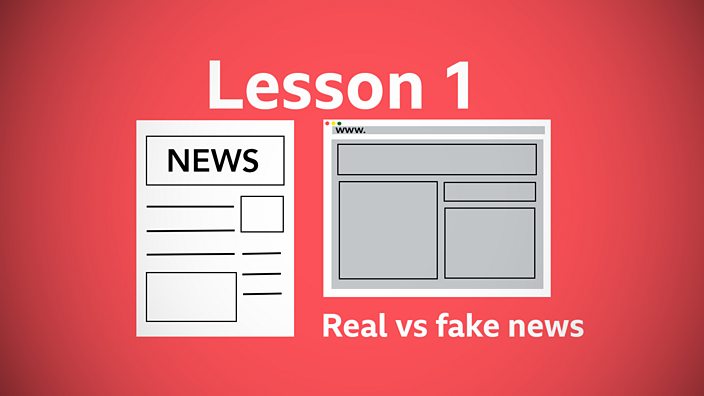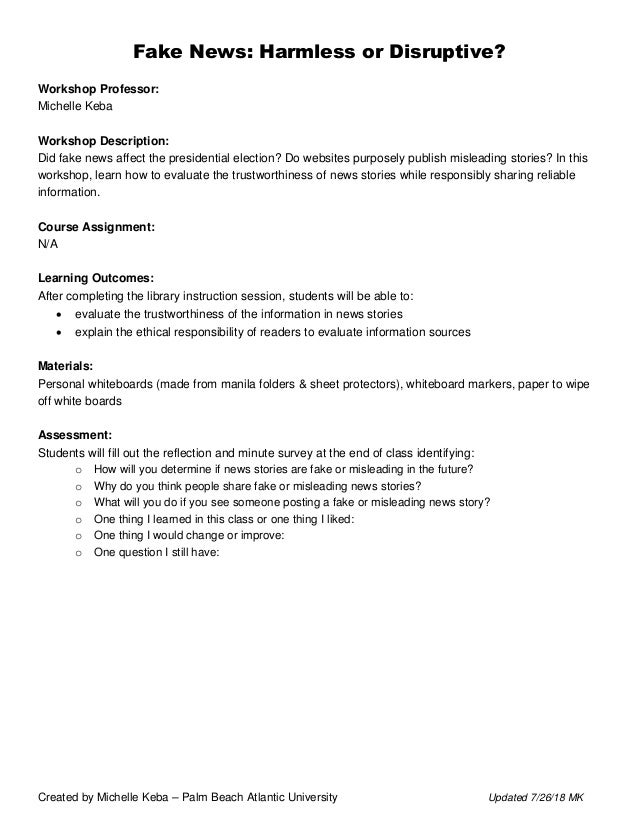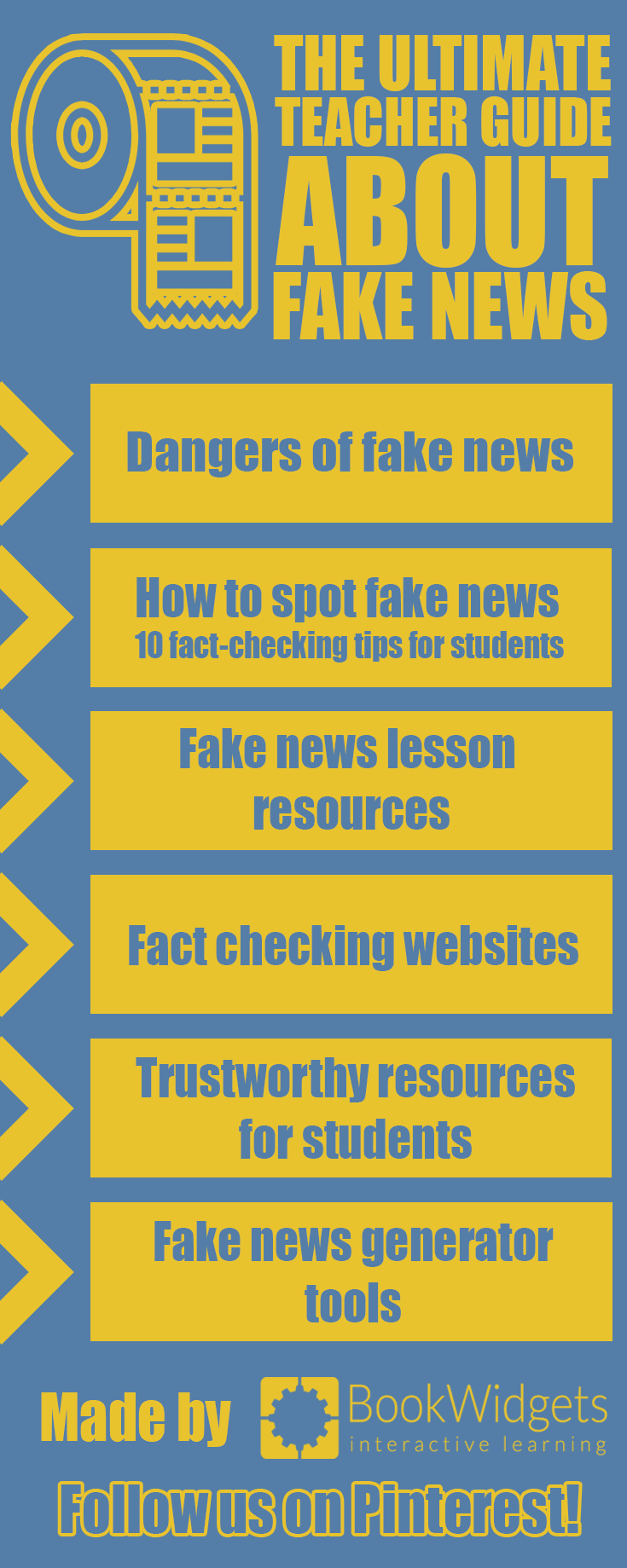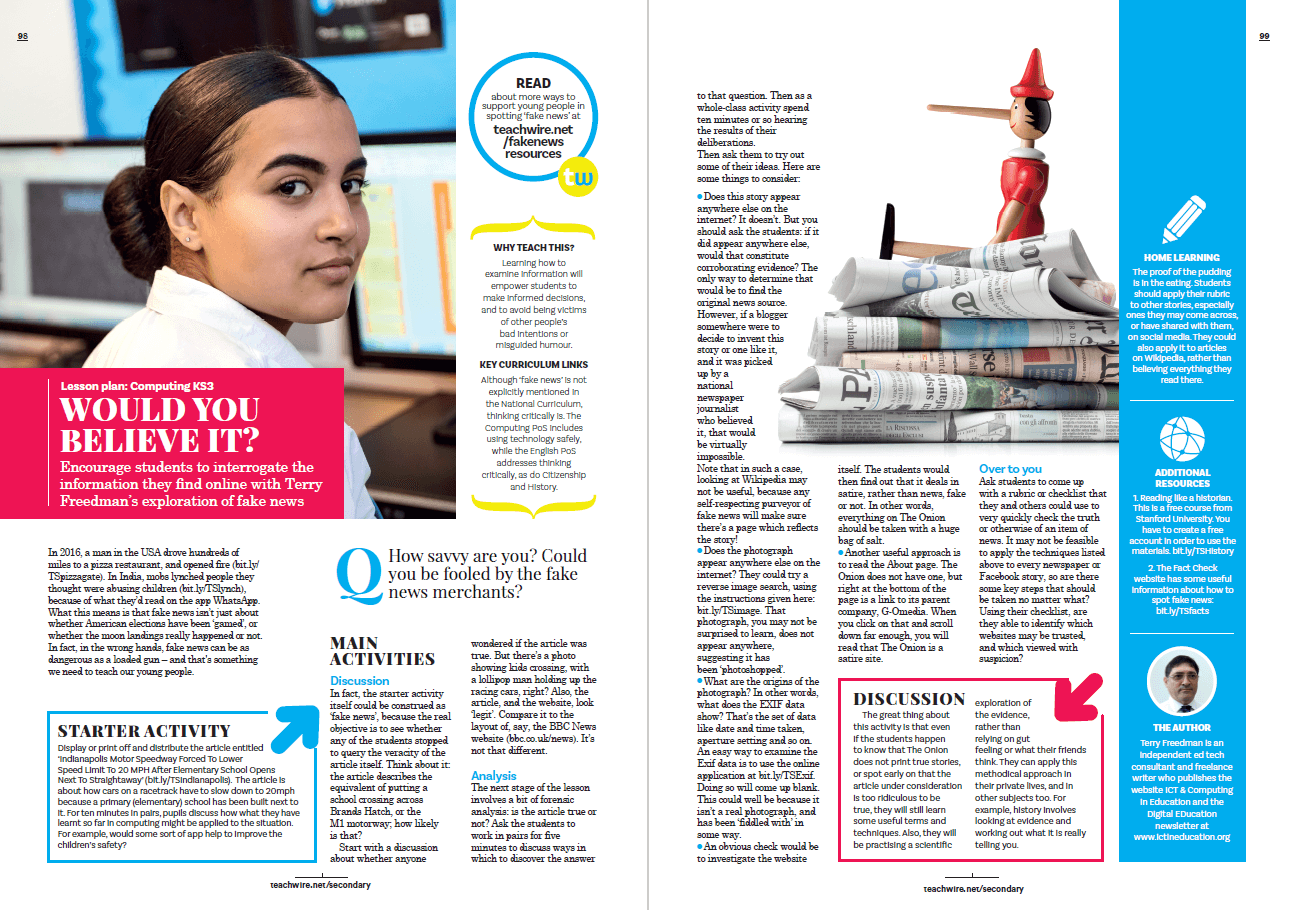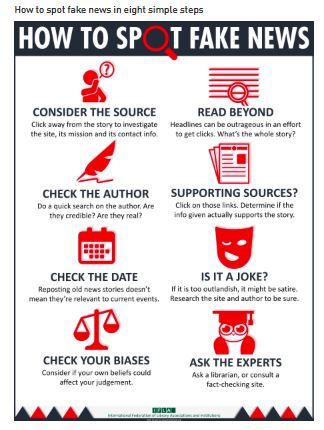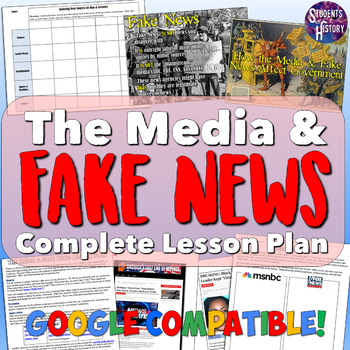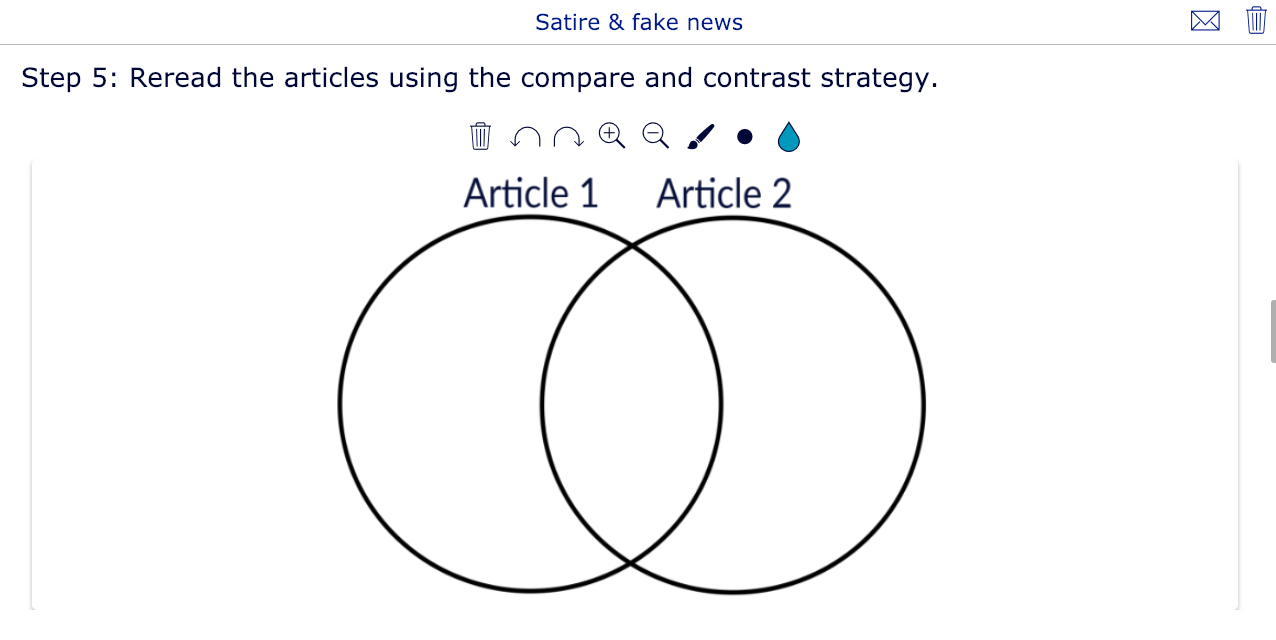Fake News Lesson Plan
Polling softwareprogram optional Lesson.
Fake news lesson plan. Students will analyze the problems and potential consequences associated with the spread of fake news. The worksheet ends with a speaking activity for students to decide if newspaper headlines are real or fake. Debrief as a class and list these ideas on the board.
Problem with Fake News video. Bookwidgetss fact checking and fake news lesson plans contain worksheets and further resources. Show Problem with Fake News video.
I adapted the lesson plan presented by Michael Spikes from the Center for News Literacy at Stony Brook University to include examples of news from my community and region. Many of these resources are aimed at native English speakers. Fighting Fake News By Rachel Roberson Featured resources The Honest Truth About Fake News KQEDs The Lowdown Breaking News Consumer Handbook.
Fake News Lesson Plan Instructor. Back to parent navigation item. Understanding why it is important to read news with a critical mind Audience Ideally adults or ages 16 and above.
Infer how a fake news story may affect someones emotions and behaviour. Identify what questions to ask and what checks to make to decide whether a news report is fake or real. Ideally this lesson is for teenagers but it can also be used with adults.
How to Spot Fake News is a class I developed after participating in ALAs Media Literacy Your Library project in 2017-2018. Click here or on the image below. Fake news lesson resources 1.
Its an interactive checklist students can use for fact-checking their resources when writing a report or doing a review. Place students in groups ask students to think about what they already know about the topic of Fake News. Next have students look at the picture s in the text and generate ideas or words that may be connected to the article.
Students then analyze their content according to each of the 20 points and 1 bonus question using online search tools to. Any number of attendees could be accommodated. Back to parent navigation item.
Then students analyze the problem and consider steps media outlets and individuals need to take to prevent the viral spread of propaganda. Available at two levels students will share their attitudes and opinions on fake news learn vocabulary related to. This lesson will employ EAVIs infographics B e y ond F a k e Ne w s and B e y ond t he H e a dl i ne s as well as some free online fact-checking tools to teach students a critical approach to news.
In this lesson students read an article about how school pupils are unable to tell the difference between real and fake news. Introduce the idea that fake news is everywhere and why it is important to be able to spot it. Did fake news have an impact on the election.
Ive put these tips in a fake news lesson plan for your students. Explain what fake news is and why it is created. Fake news is making news and its a problem.
Write answers on whiteboardword doc on computerlet students enter on Padlet or Poll Everywhere optional. Fake News Has Terrifying Power Over the Real World Vice. Give reasons why fake news can be harmful.
Understanding the 5 Elements of Fake News. Students then skim read two webpages. Review the 5 Cs.
Josh Corbat Show bio Josh has taught Earth Science and Physical Science at the High School level and holds a Master of Education degree from UNC-Chapel Hill. Plan called Fighting Fake News. After a brief reading comprehension activity students study the websites.
They have to ask themselves 10 questions for fake news detection. Identifying Fake News Headlines Subject Distinguishing between Fake News headlines and real news headlines. The Cornerstone of Civic Online Reasoning Stanford University History Education Group study.
How do we address the problem from here. One website is about the Tree Octopus a spoof while the other is about the Octopus Tree. Fake News and.
Listenwise have collected TED talks articles and news stories on teaching your students about fake news which you can use in the classroom. When they have finished ask each. From KQEDs The Lowdown.
This lesson gives students media literacy skills they need to navigate the media including how to spot fake news. Just share the link with your students and they. Hand out the worksheet.
How do you know if a news source is reliable. The worksheet focuses on the skills of reading speaking and understanding and includes several vocabulary activities. Second ask students to recommend what a person should do about the information.
As a final activity students find other fake news stories currently circulating the internet. The lesson begins with a brief discussion about news and fake news. Students will identify and evaluate ways to avoid fake news in social and academic settings.
Fake News Edition with printable WNYCs On the Media Evaluating Evidence. How does a fake news lesson flow. Fake news lesson plan Put students into groups of 2 or 3 Distribute copies of the Le sson Plan and Beyond the Headlines Poster to students.
This lesson plan features a Channel One News report on the problem. Lead-in 510 minutes Tell the class that todays lesson is about real and fake news websites. I used news videos and articles to engage students in the lesson.
How to teach your students about fake news Subjects. First you ask students to research to see if something is true or not. Ask learners where they get their news.
